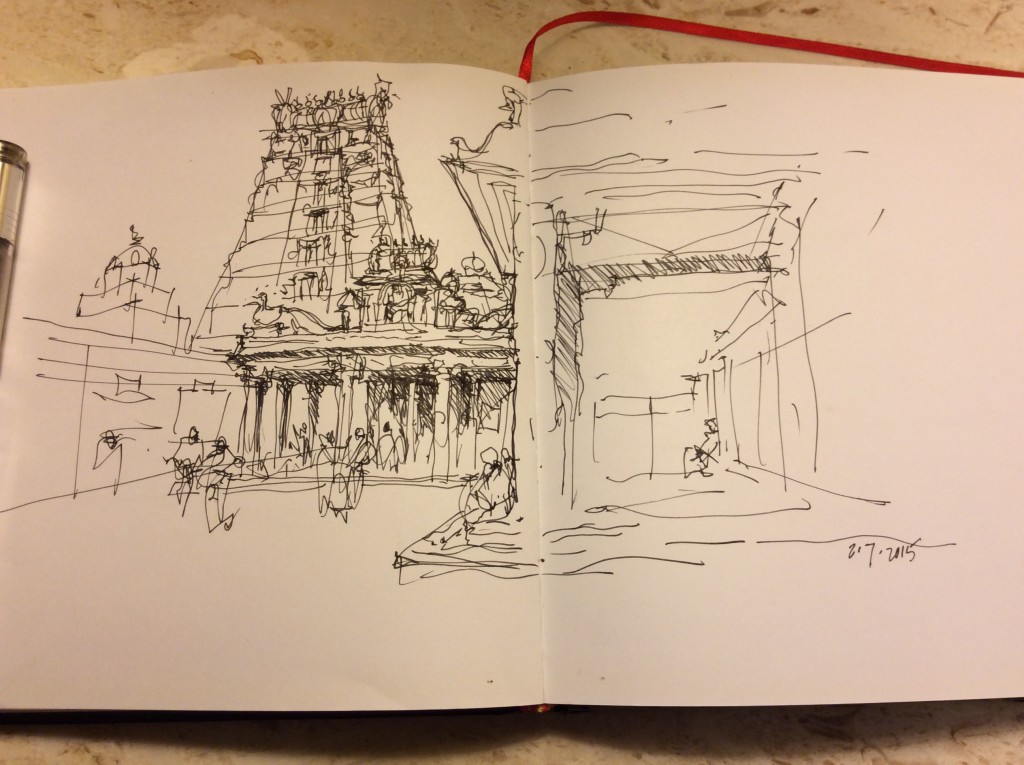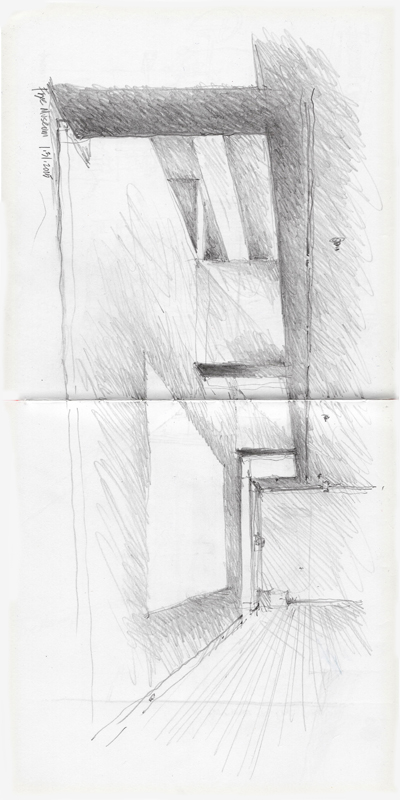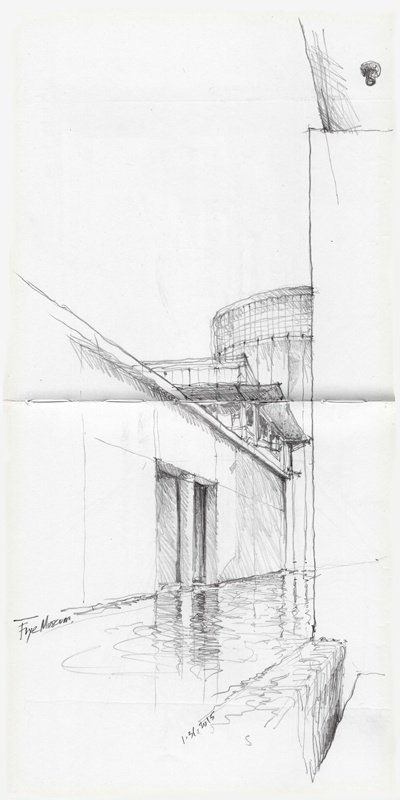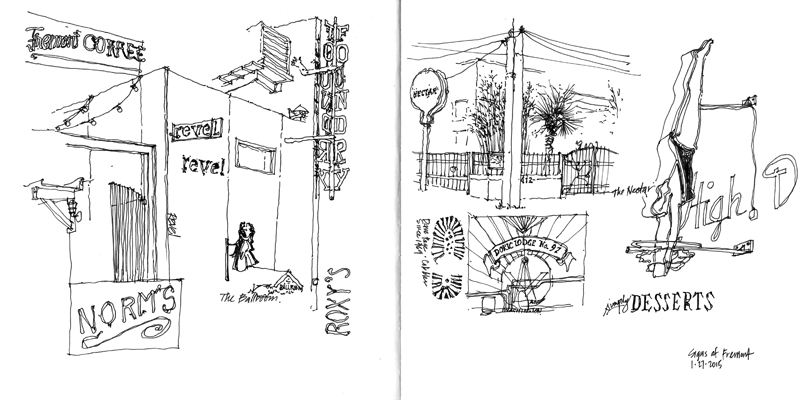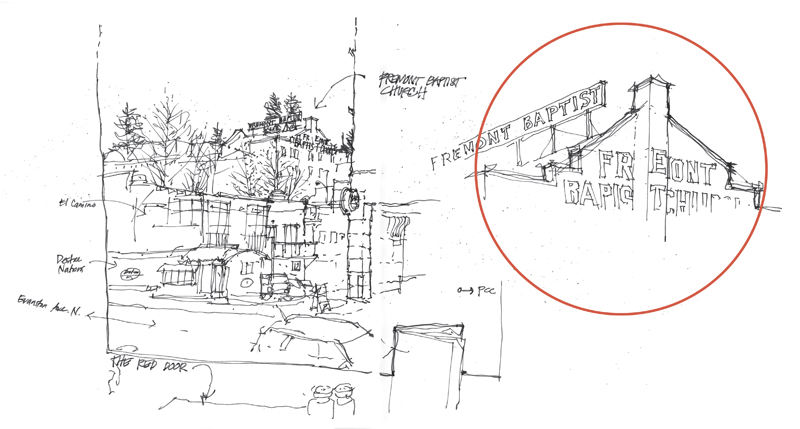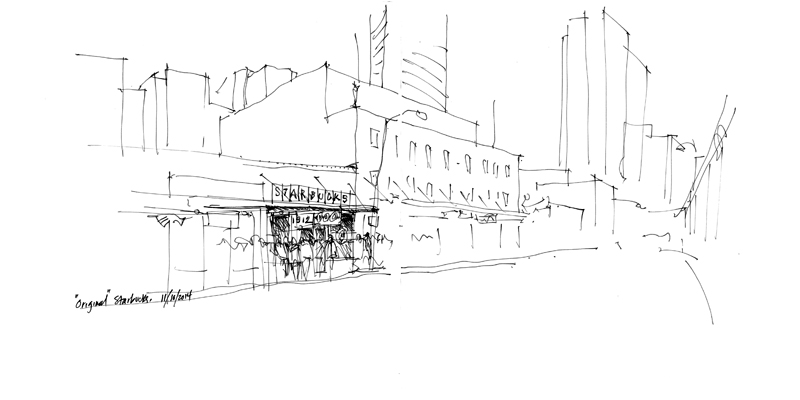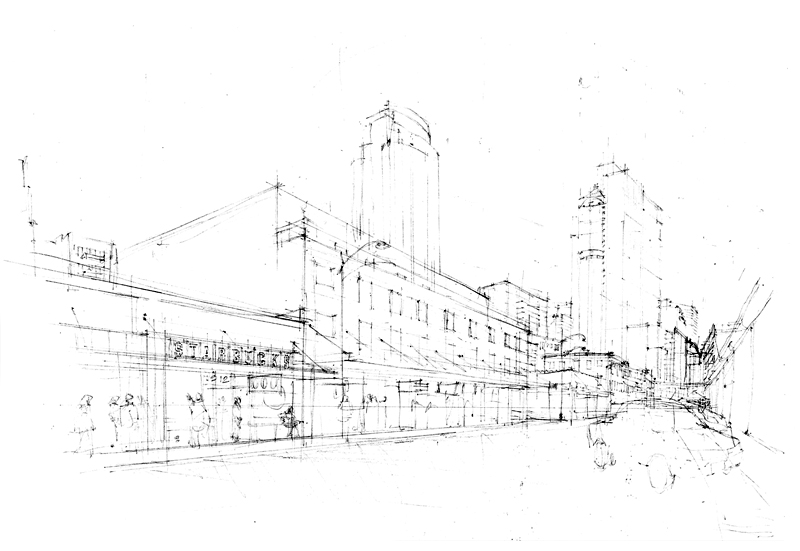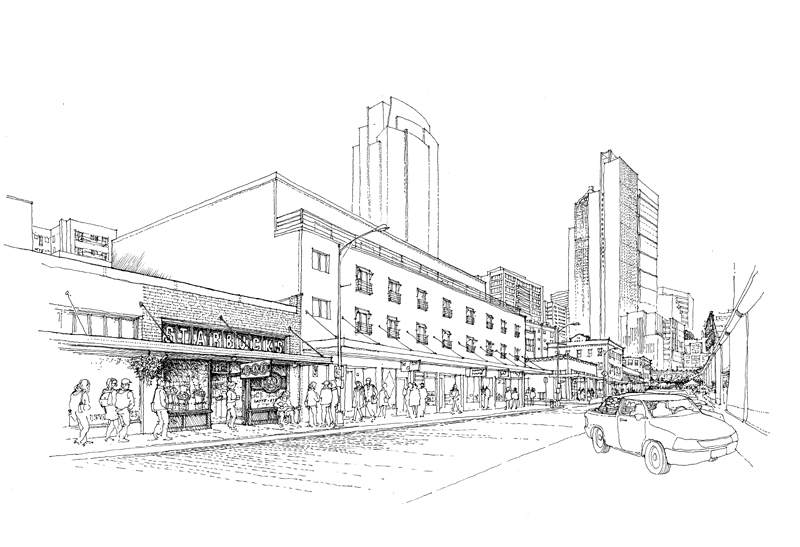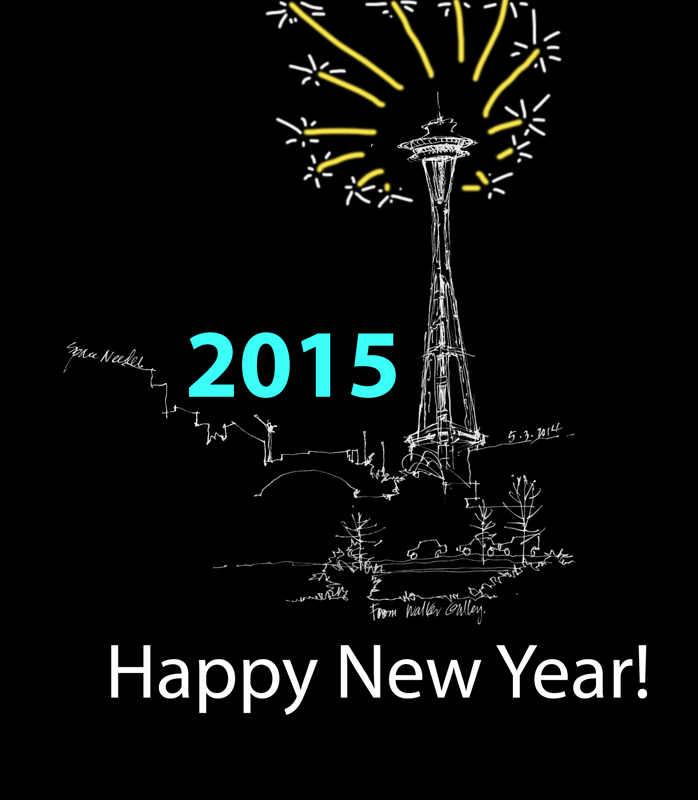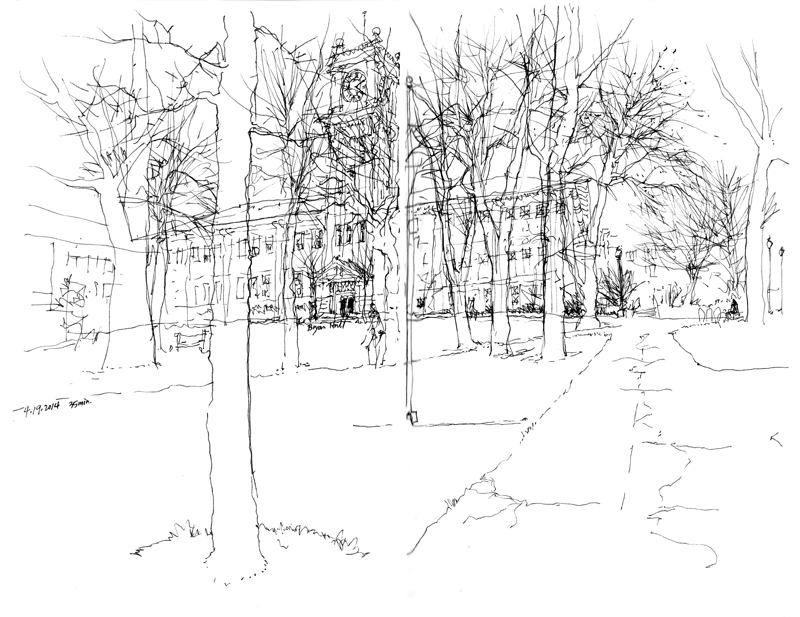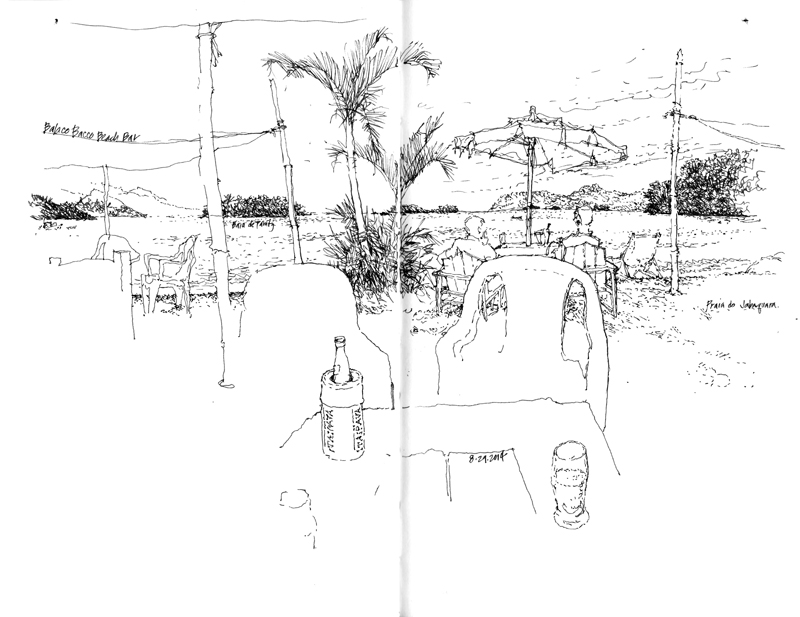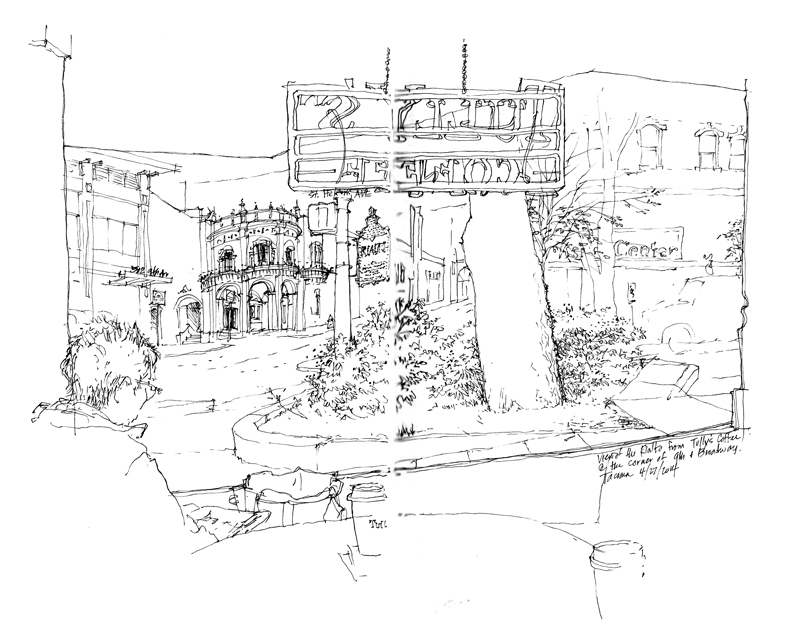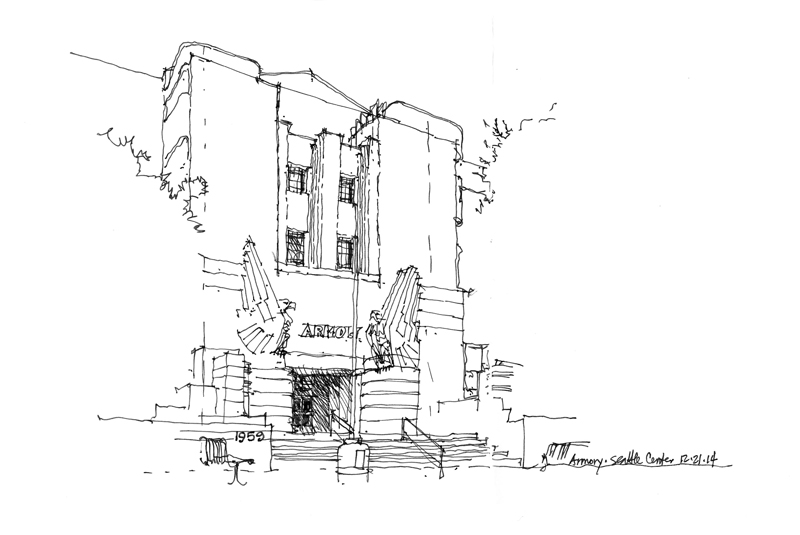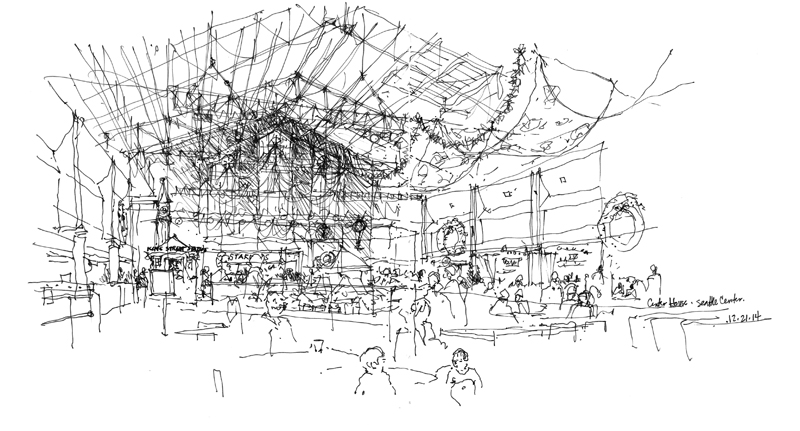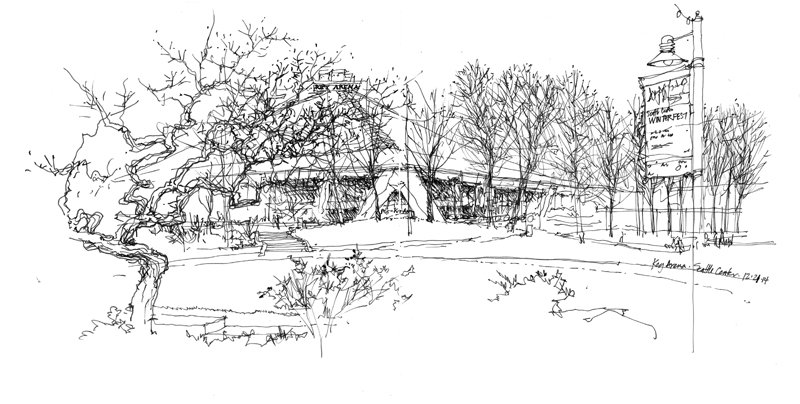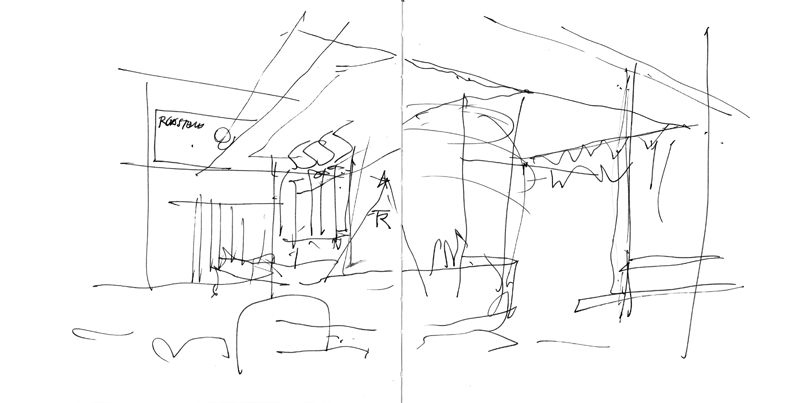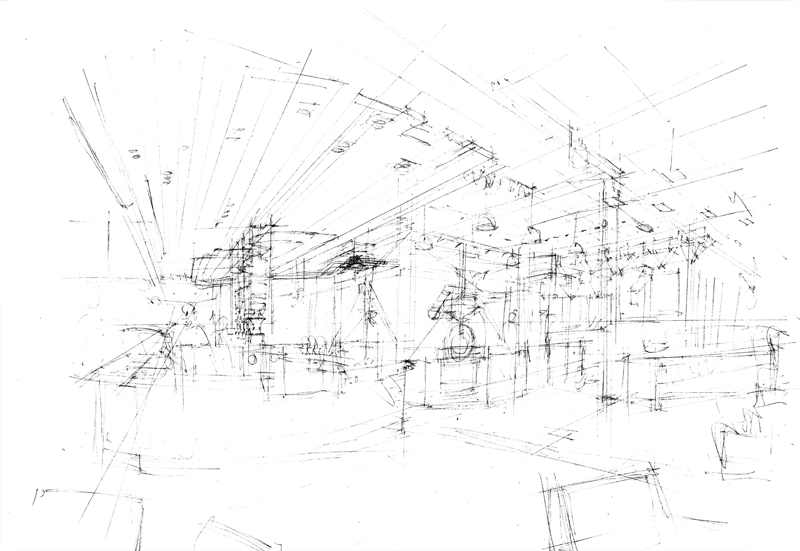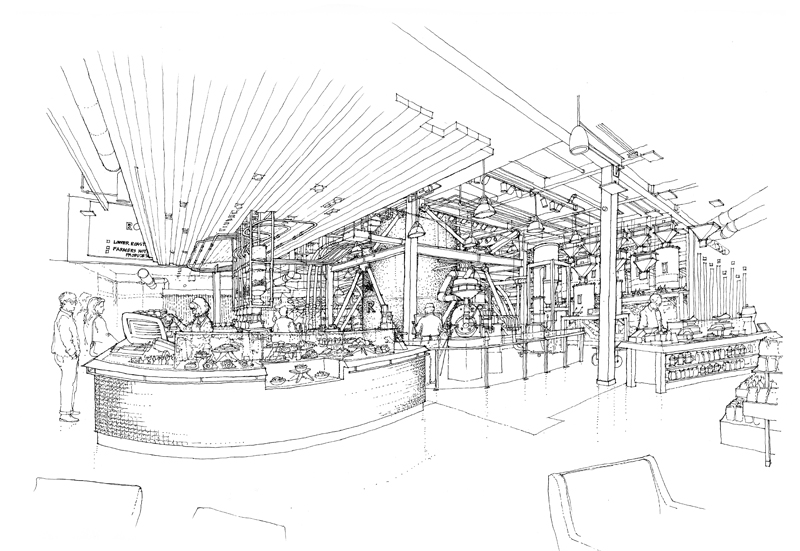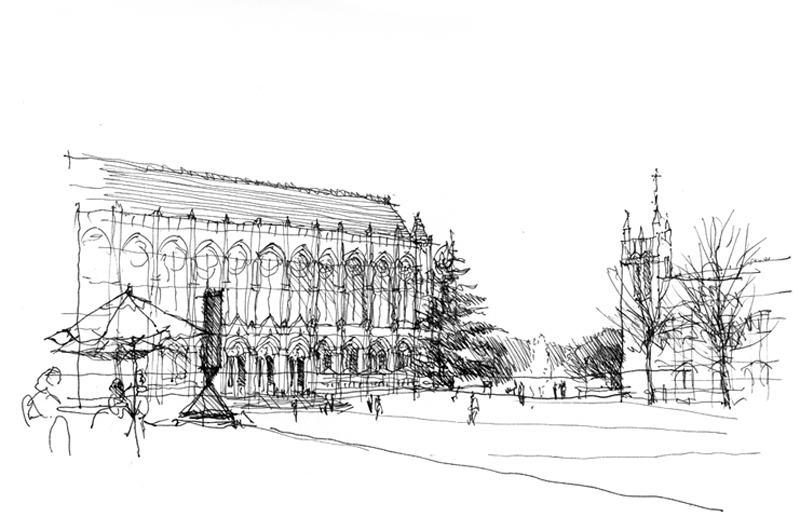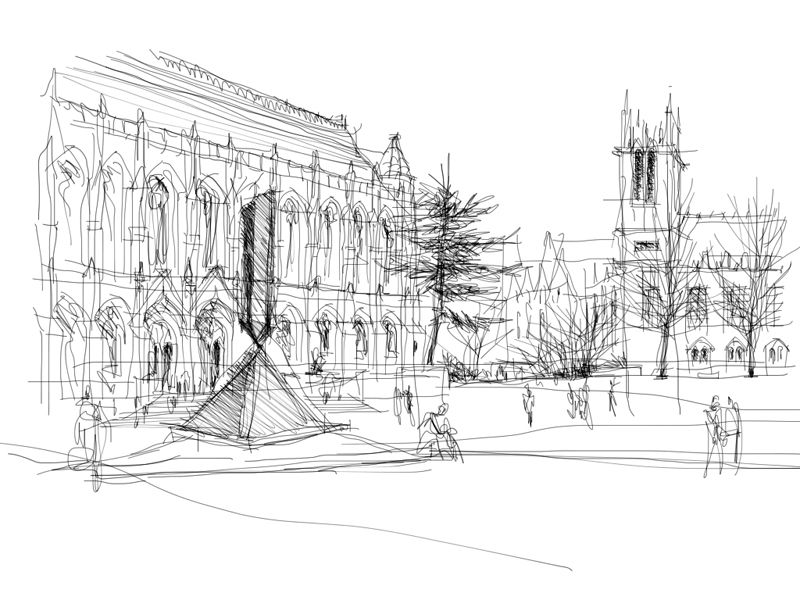My second attempt at entering India was successful and we began the first of two days of a drawing workshop sponsored by the AARDE foundation. Many thanks to Xavier Benedict for hosting my visit and to the students and architects who persevered and returned to make this weekend possible. We began at the Luz Church, built in 1516, and then moved onto the 7th century Kapaleeshwarar Temple in the Mylapore neighborhood of Chennai. Here is the group in front of the main doorway and a quick study I did of the interior of the temple complex. The temple architecture is a difficult subject because of the multiple layers of sculptural details. The approach has to first establish the geometric framework that holds the details together. Tomorrow we head to Parry’s Corner to visit a prime example of Indo-Saracenic architecture.
Category Archives: Urban Sketchers
Frye Art Museum
A small group of Seattle Urban Sketchers met yesterday at the Frye Art Museum to participate in the 46th World Wide Sketchcrawl. Because only graphite or colored pencils are allowed in the museum, I brought along an old-fashioned mechanical lead holder equipped with a 4B lead.
Switching from a fountain pen to a graphite pencil forced me to adjust my usual approach. Graphite pencils respond to pressure much more readily than an ink pen and encourage the use of tonal values. So the process I used was to first sketch the structure out lightly and then hatch broad areas of gray. I then wend back and darkened selected portions to achieve the desired gradation and contrast. Each of these sketches took about 30 minutes to complete.
Signs of Fremont
With a historic snowstorm bearing down on the northeast, we’re enjoying sunny 60° weather here in Seattle. To take advantage of this unseasonably warm period, I went out to draw Fremont. While I had originally intended to sketch the entrance to Revel, the local Korean fusion restaurant, I soon detoured to collecting some of the signs of Fremont. I didn’t sketch them all but plan on continuing the series in the future.
Iconic Images
If we think of the Eiffel Tower, the Sydney Opera House, or the Chrysler Building in New York City, we can see the image in our head, even if we have never seen the real thing. It appears as though the stream of images we have seen in photographs and movies have been seared into our memory banks. And we might even be able to sketch reasonable facsimiles if asked to.
After we have visited a place several times, or lived near to, driven by, or walked past a place for a number of years, we might also form an iconic image of that place. A personal example is the Fremont Baptist Church, established in 1892 with the current brick building being constructed in 1924, perched on a hill above downtown Fremont in Seattle.
For me, this iconic image of Fremont has materialized over the years. Yet the image I hold in my mind’s eye does not correspond to what you can actually see from any position on the street. What seems to occur is that our mind is able to recombine the fragmented, partial views we’ve experienced into a single iconic, memorable image.
The First Starbucks Store
Tucked in amongst a row of buildings on Pike Place in Seattle is the “first” Starbucks store, which is one of the main tourist attractions in the historic Pike Place Market district. You still see this store being photographed at all hours of the day and throughout the year. Even though a plaque inside proclaims this to be the first Starbucks store, from 1971 through 1976 there was an earlier Starbucks at 2000 Western Avenue, which sold only whole coffee beans while serving free samples of brewed coffee.
As with my drawing of the Starbucks Reserve Roastery and Tasting Room, the drawing of the first Starbucks store involved three phases: a quick compositional study, a rough pencil layout submitted for approval, and finally, the finished ink-line drawing.
Happy New Year!
Before looking forward to new and rewarding sketching prospects in 2015, I want to take a look back with appreciation for the opportunities to conduct workshops during the past year. I will always be grateful for these chances to connect with others who share the same passion for drawing.
A sketch of the campus clock tower at the ending session of the workshop at Washington State University with Gail Wong and Gabi Campanario.
Enjoying a cool Itaipava on the Praia do Jabaquara during the Urban Sketchers Symposium in Paraty, Brazil.
A view from inside Tully’s coffee shop during the Line to Color workshop with Gail Wong in Tacoma, Washington.
Seattle Winterfest
Here are three scenes from Seattle Center I drew during the monthly meeting of the Seattle Urban Sketchers group. The first is a quick study of the east entry to the former Armory, which is now known as the Center House.
The second is the interior of the Center House, which houses a large food court, entertainment stage, and a super-sized model train layout for the holidays.
The last is of Key Arena, former home of the Seattle Supersonics but still a successful venue for many sporting and cultural events.
Evolution of a Drawing
Few drawings are executed in a single pass. When drawing on location, my process usually involves first blocking out the overall structure of a scene before refining the forms, making adjustments, and filling in the details. And for studio work, the process becomes a little more involved. For example, for a drawing of the interior of the new Starbucks Reserve Roastery and Tasting Room in the Capitol Hill neighborhood of Seattle, there were three phases in the process. The first is a very quick study of the possible viewpoint. The second is a rough pencil layout of the final view submitted for approval. And finally, the finished ink-line drawing.
Two Views of Red Square
Back in 2010, a number of videos were shot of me drawing scenes on the UW campus. Here is the sketch I did of Red Square with Suzzallo Library in the left background, Gerberding Hall to the right, and a table setting and Barnett Newman’s sculpture, Broken Obelisk, in the foreground. During a break in the rainy weather we’ve been having the last few days, I again went to draw Red Square, this time drawing a slightly different view with my iPad Mini and the Brushes app.
Drawing with my forefinger on a glass surface that is only 6.25 x 4.75 inches in area fosters the use of more gestural strokes and inhibits the drawing of fine details. Even though the strokes are only one pixel wide, I found myself suggesting rather than describing because I wasn’t willing to constantly zoom in and out and painstakingly work pixel by pixel. I’ve tried a number of styli but haven’t found one that is a reasonable substitute for the nib of a fountain pen due to the nature of the capacitive touchscreen display.
Still, the overall process of establishing perspective structure first before adding tones and details remains the same as when drawing with a pen on paper. I hope to show this when I export the data and convert the actions into a Quicktime movie.
Main Street Dallas
During a brief visit to Dallas recently, I woke up early one morning and sketched this view of the city’s Main Street. To capture the feeling of a city in transition, this panorama takes in the high-rises of a typical downtown, including the Bank One Center by Philip Johnson and John Burgee (now the Comerica Bank Tower) on the right; one of the many older structures being torn down to make way for new projects in the middle; and the Laumeier Sculpture Park featuring the Eye, a 38-foot diameter sculpture by Tony Tasset. What surprised me was how roughly the sketch developed until I realized that the ink in my pen was not flowing as freely as it normally does because of the 43° weather.


